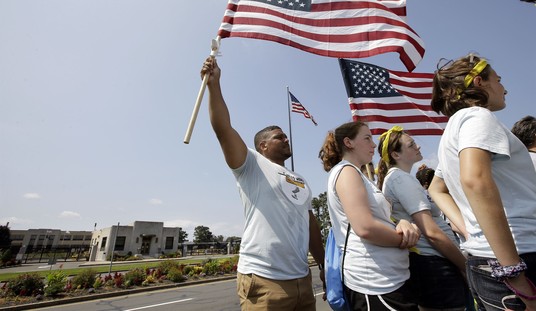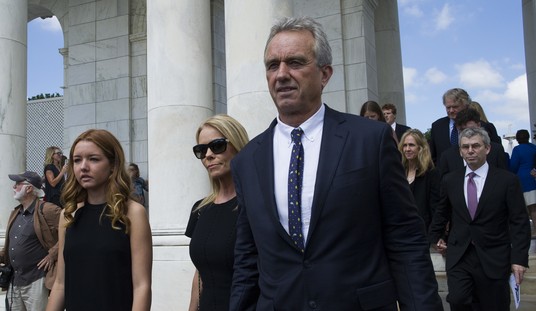Navy’s Athletic Director Chet Gladchuk seems to have been prescient when he struck an agreement with his then-counterpart Kevin White years ago to keep the academy’s football rivalry with Notre Dame intact through the 2026 season to guarantee the schools will play each other for 100 consecutive seasons.
In a new era of conference realignment in college football, the Navy-Notre Dame rivalry is one that the officials of both schools seem intent on keeping while other traditional match-ups are scuttled across the country. The Naval Academy also is aided financially in its series with Notre Dame through a CBS television contract for the games hosted by Navy in 2016 and 2018, as well as this year’s contest on Nov. 1.
The shuffling of conference affiliations has come at the expense of a number of customary annual tilts that include Nebraska-Oklahoma, Texas-Texas A&M and Kansas-Missouri. Each of those yearly clashes ended when one of those pairs of teams switched to a new conference.
The Navy-Notre Dame football game on Nov. 1 became the 88th consecutive annual clash between the two elite academic schools to rank as the longest-running inter-sectional rivalry in the country. The neutral site venue at FedEx Field in Landover, Maryland, just 24 miles from Navy’s Annapolis home offered a seating capacity of 79,000, more than double the 34,000 seats at the Navy-Marine Corps Memorial Stadium.
Cold and windy weather held down the paid attendance to 36,807 but it still will give Navy additional revenue and television exposure against a football team that could end up in the season-ending playoffs for the national title.
Even when factoring in the expense of renting the use of FedEx Field, the game played at the NFL home of the Washington Redskins will give Navy a healthy financial boost. Navy also aided its revenues significantly when it ventured to Baltimore on Aug. 30 to take on Ohio State University, whose fan base helped to achieve a paid attendance of 57,579 at that neutral-site game only 26 miles from Annapolis.
Recommended
Navy coaches also can tell the aspiring midshipmen who they are seeking to recruit that the team plays Notre Dame each year on national television. Talks are ongoing to play the next two Navy home games against Notre Dame in 2016 and 2018 at NFL stadiums, Gladchuk said.
Unlike many rivalries that seem expendable these days, the Navy-Notre Dame football series seems to be on “sacred ground,” Gladchuk said.
In an interview before the Nov. 1 game, Gladchuk described the joint Navy-Notre Dame luncheon held in Annapolis on Oct. 31 as a “hug festival.” The “incredible respect” and “affection” of the luncheon attendees showed that this particular college football rivalry is unique, he added.
One reason for the close ties between the two schools is that Navy came to Notre Dame’s rescue during World War II in 1941 when its student population fell from 3,000 to 750 due to the departure of most of its students to serve in the military during a time of national crisis.
“Notre Dame was at a point of going out of business,” Gladchuk said.
But the Naval Academy created a U.S. Naval Reserve Midshipmen School at Notre Dame to give the financially strapped university a critically needed infusion of students. By 1943, Notre Dame’s student population had been boosted back to 3,500-4,000. By the end of the war, Notre Dame had produced more than 25,000 reserve Naval officers and ensigns.
In a post-game interview, Navy Head Coach Ken Niumatalolo responded to my question about the importance of the rivalry by pointing out that Notre Dame officials kept true to their word about preserving the annual rivalry in acknowledgement of the Naval Academy’s help during World War II. The Notre Dame players, along with those from Navy, are “very respectful,” he added.
‘Notre Dame is a unique institution,” Niumatalolo said.
Despite the creation of “Big Five” conferences, Notre Dame and Navy have retained their rivalry, Niumatalolo said.
“Brian Kelly (Notre Dame’s coach) has good football players, but when you meet them after the game and you shake their hands, those are good kids,” Niumatalolo said after his team battled the Fighting Irish gamely before falling 49-39. “I’m just impressed with their young men, but unfortunately for us, they are really good football players, too.”
For three of the future Navy officers who played in the game and participated in a post-game interview, they said the annual contest with Notre Dame is one of the key reasons they wanted to attend the Naval Academy and play football there.
“To play in at atmosphere such as this one doesn’t get any better,” said Navy Quarterback Keenan Reynolds.
The presence of more than 4,000 Navy midshipmen who marched onto the field in a pre-game ceremony before the game constitutes the vast majority of the student body. That overwhelming student support for their team stands in contrast to many universities, including top football powers, that now struggle to attract students to stay for a full game or even show up at all.
Much the way Navy helped Notre Dame financially in World War II, the South Bend-based university now helps Navy boost its football-related revenues each year by scheduling the academy. In doing so, they also are keeping their shared tradition alive.
Paul Dykewicz is the editorial director of Eagle Financial Publications, a columnist for Townhall and Townhall Finance, and the author of a new book, “Holy Smokes! Golden Guidance from Notre Dame’s Championship Chaplain.”

























Join the conversation as a VIP Member